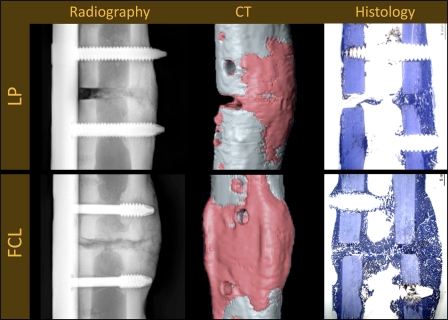Fig. 7.
Radiographic, computed tomography (CT), and histological evaluation of the tibiae after the sheep was killed at nine weeks after surgery. The locked-plate (LP) constructs suppressed callus formation at the near cortex, where gap motion is minimal, leading to partial nonunions in three of the six sheep. The far-cortical-locking (FCL) constructs induced more callus formation, symmetric callus, and reliable bridging in all six sheep.

